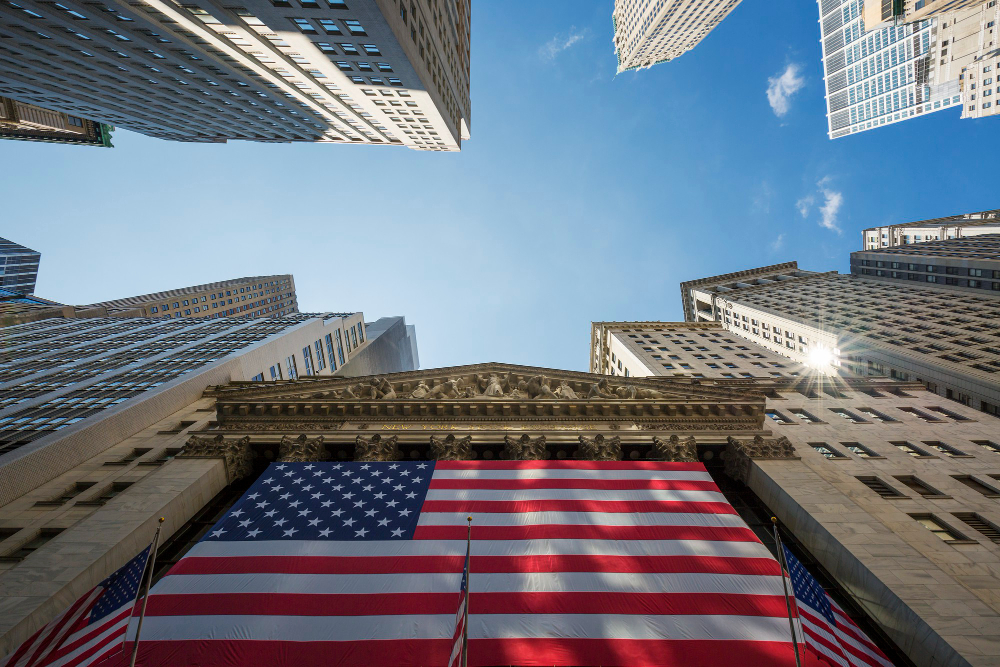BOND MARKET’S RESILIENCE SUGGEST A SOFT LANDING FOR THE US ECONOMY
Based on data from the S&P U.S. High Yield Corporate Bond Index, US junk bonds delivered a return of 1.53 percent in the month of July, bringing the total returns for the first seven months of the year to 6.7 percent. This performance has positioned US junk bonds as clear outperformers in comparison to other segments of the US bond market. For instance, the Morningstar US Core Bond index only managed to achieve a return of 2.1 percent during the same seven-month period. However, despite these positive returns, concerns linger regarding the attractiveness of this asset class, given the uncertainty surrounding the US economic outlook and the ongoing contraction in the high-yield bond market this year.
High-yield bonds represent a specific category within the corporate bond market, typically consisting of bonds rated below BBB− or Baa3 by credit-rating agencies. Due to the elevated risk associated with high-yield bonds compared to government and high-grade corporate bonds, issuers are required to offer higher coupon rates to compensate for the increased likelihood of default on their repayment obligations. Historically, these issuers mainly included “fallen angels,” which were previously investment-grade companies that had been downgraded to junk status. However, since the 1980s, the high-yield market has diversified to encompass a broader range of new bonds from companies with below-investment-grade ratings. This expansion has attracted more investors seeking higher yields and encouraged more issuers to access this market for corporate financing purposes.
Yields on junk bonds experienced a significant surge, rising from under 4 percent in the third quarter of 2021 to approximately 9.5 percent in October 2022. This led to a decline in prices to historical lows, as the entire US bond market complex faced pressure. Additionally, the Federal Reserve adopted an aggressive interest rate-hiking stance for a significant portion of the previous year, which elevated borrowing costs. Consequently, the issuance of US high-yield bonds plummeted to its lowest level in 14 years. According to Dealogic data, total corporate high-yield issuances in 2022 fell from $404 billion the previous year to just $91 billion. PitchBook also noted that bond issuances during the latter half of the previous year reached their lowest point since the Global Financial Crisis (GFC), with a cumulative total of $34.3 billion in high-yield bonds issued during that six-month period.
Yields have somewhat eased this year, decreasing to 8.2 percent by early August as demand for junk bonds experienced a modest recovery. Nevertheless, these yields remain relatively high from a historical perspective. The high-yield bond market has also witnessed a resurgence in issuances, with the second quarter recording more than double the number of issuances compared to the same period in the previous year. Moreover, April and May saw the best two-month sequential issuance total ($40 billion) since the end of 2021. It’s worth noting, however, that PitchBook described this year’s growth as moderate when considering historical standards.
The robust gains made by junk-bond investors this year can, in part, be attributed to market expectations of a soft landing for the US economy. This optimism is based on factors such as cooling inflation, the absence of negative economic growth, and stabilizing employment data. In this favorable environment, high-yield bonds have rallied across the board, with BB-rated bonds experiencing slightly suppressed returns due to a modest increase in US Treasury yields, while CCC-rated bonds have performed the best, primarily driven by the outlook for a soft landing. David Crall, the CEO of Nomura Corporate Research and Asset Management, expressed a positive outlook for the remainder of the year but emphasized the importance of continued validation of soft-landing expectations for market performance.
By early August, the spread of 3.80 percent on junk bonds over 10-year US government Treasuries had tightened by nearly 2 percent compared to a year earlier. This suggests that more investors anticipate brighter economic prospects and believe that the Federal Reserve can control inflation without causing significant economic disruption. According to Marty Fridson, CIO at Lehmann, Livian, Fridson Advisors, such trends remain somewhat mysterious, as there is limited evidence in the market of a forthcoming US recession. Issuers currently hold the upper hand, with manageable debt maturities in the near term and no urgent need for refinancing.
One factor potentially supporting the confidence in high-yield bonds is the strong balance sheets of the issuer companies. Many of these companies effectively managed their balance sheets and liquidity during the pandemic, which contributed to improved profitability. Furthermore, weaker issuers were largely eliminated from the market when high-yield defaults peaked at 6.3 percent in October 2020. Since then, there hasn’t been sufficient time for the surviving issuers to develop unhealthy financial practices. Additionally, some defaulted bonds were replaced by those from the lowest-rated investment-grade bonds that transitioned into the high-yield market, raising the overall credit quality of the index. Currently, BB-rated bonds, representing the highest high-yield rating, constitute 49 percent of the market, compared to the historical average of 43 percent over the past two decades.
Another factor supporting the strength of junk bonds is the flurry of rating upgrades that have enhanced the profiles of high-yield issuers. Goldman Sachs reported that by late June, over $81 billion of debt had been upgraded to investment-grade status, in contrast to the relatively small $15.6 billion of debt that had been downgraded to junk status. This shift in the composition of the market has resulted in a reduction in the supply of junk bonds this year, driven primarily by rising stars outpacing fallen angels. Lotfi Karoui, Goldman’s chief credit strategist, noted that the recent upgrades reflect a backlog of rising star candidates that should have been upgraded earlier.
Also Read About Market Click here
However, some experts argue that current market metrics may not accurately reflect the overall health of the US economy. A report from the Financial Times on July 12 highlighted that the US junk-bond market, with a total value of $1.35 trillion, had contracted by nearly $200 billion since its peak in late 2021. This contraction has inflated prices but may be sending overly optimistic signals about the US economic outlook. Dealogic data also indicated that through May of this year, only $20.4 billion, which is less than one-third of the total junk issuances, was used for new fundraising, suggesting that the high-yield bond market may not provide an accurate gauge of economic prospects. According to Lotfi Karoui of Goldman Sachs, a significant portion of this year’s market activity has involved refinancing, essentially replacing old debt with new debt, rather than adding new debt to balance sheets.
In the event of a severe recession, high-yield bonds could face substantial challenges as investors seek to reduce exposure to riskier assets, potentially leading to double-digit yields. Adam D. Abbas, co-head of fixed income at Harris Associates, expressed concerns about the vulnerability of the high-yield asset class, especially double-B-rated bonds, in the event of a more significant and prolonged recession.
AllianceBernstein, on the other hand, offered a base-case scenario suggesting that if economic growth remains stable over the next 12 months, Treasury yields are likely to remain steady, spreads may widen slightly, and returns could be in the mid-single digits. A hard landing and a dramatic widening of spreads, resulting in negative returns for high-yield bonds, are considered less likely in their analysis.
In conclusion, the US high-yield bond market has experienced a rollercoaster ride in recent times, with significant challenges in the form of rising yields, reduced issuances, and economic uncertainties. Despite these hurdles, the market has shown resilience, driven by optimistic expectations of a soft landing for the US economy, strong issuer balance sheets, and a shift in the composition of high-yield bonds through rating upgrades. However, caution remains warranted, as the market’s current state may not fully reflect the true economic landscape, and the potential for a deep recession could pose risks to high-yield bond investors.
Read More on Bing









0 Comments